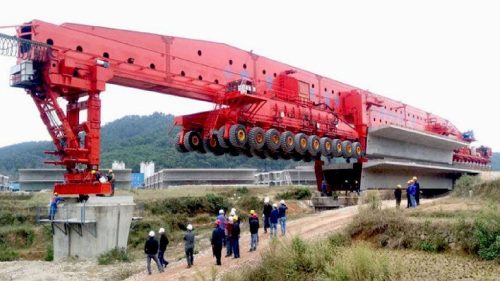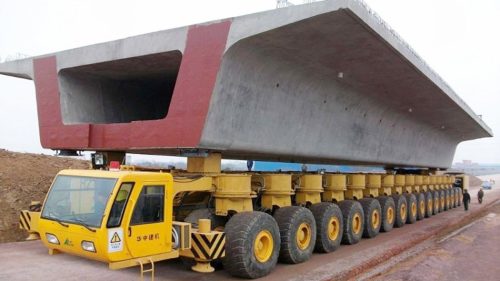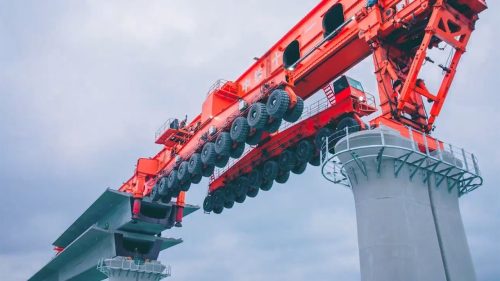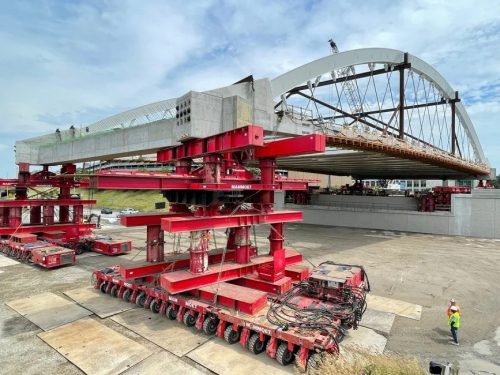Bridges, as magnificent symbols of human engineering prowess, serve as vital connectors between cities, spanning vast rivers, and conquering geographical obstacles.

The intricate process of manufacturing and constructing these remarkable structures stands as a testament to human ingenuity, showcasing the use of exceptional heavy-duty machinery. In this article, we will delve into the captivating world of contemporary bridge manufacturing and construction, highlighting the extraordinary techniques and machinery involved.
The Art of Bridge Design
The journey of creating a modern, large-scale bridge commences with meticulous planning and design. Collaborative efforts between civil engineers and architects yield an efficient and structurally sound blueprint for the bridge. Factors such as load-bearing capacity, environmental conditions, and aesthetics are meticulously considered to ensure the success of the project.

Heavy-Duty Machinery in Action
Following the design phase, the manufacturing process swings into high gear, with heavy-duty machines playing a pivotal role in shaping and assembling the various bridge components. Towering cranes, massive gantries, and precision cutting tools are brought into action, transforming raw materials into structural elements.
Steel, renowned for its strength and versatility, is a common material used in bridge construction. The manufacturing process involves cutting and shaping steel beams, girders, and trusses to precise specifications, facilitated by automated cutting machines, plasma cutters, and computer-controlled bending machines.
The Art of Welding
Welding, a critical process in bridge construction, joins the fabricated steel components together. Skilled welders employ advanced welding techniques, such as submerged arc welding or gas metal arc welding, to create robust and durable connections between the bridge elements. Welding robots are also utilized to enhance efficiency and maintain high-quality standards.

Precision Assembly On-Site
As the individual components take shape, they are transported to the construction site for assembly. Heavy-duty cranes and gantries, capable of lifting massive loads, carefully position the structural elements into place. This phase demands precision and coordination to ensure that each component aligns flawlessly with the others.
Completing the Bridge
Once the main structure is assembled, additional elements such as concrete decks and railings are added to complete the bridge. Concrete mixing trucks deliver the required amount of concrete to the construction site, where it is poured into molds and allowed to cure. This creates a solid deck surface that provides stability and support for vehicles and pedestrians.

Stringent Quality Control
Throughout the entire manufacturing and construction process, quality control inspections are conducted to ensure compliance with safety standards and design specifications. Non-destructive testing methods, including ultrasonic testing and magnetic particle inspection, are employed to detect any flaws or defects that may compromise the bridge’s integrity.
Awe-Inspiring Achievements
The modern bridge manufacturing and construction process truly showcases the remarkable capabilities of heavy-duty machines and the expertise of engineers and construction professionals. From the precise shaping of steel components to the intricate welding processes and the careful assembly on-site, every step is executed with utmost precision and attention to detail.
In Conclusion
The manufacturing and construction of modern bridges are awe-inspiring endeavors that rely on amazing heavy-duty machines and the ingenuity of skilled professionals. The combination of careful planning, cutting-edge technology, and meticulous execution ensures the creation of these remarkable structures that enhance connectivity and shape the landscapes of our cities.
Witnessing the incredible manufacturing and construction process of the biggest bridges is a testament to human achievement and the constant pursuit of excellence.

